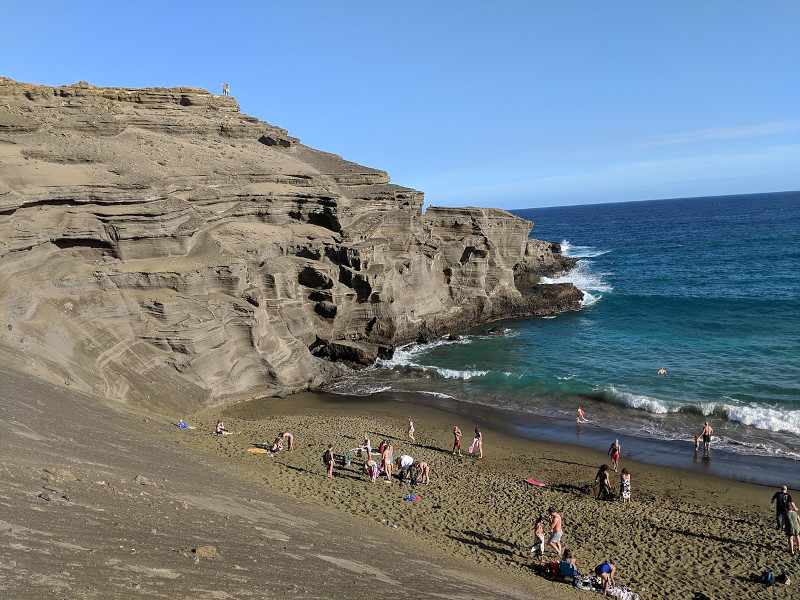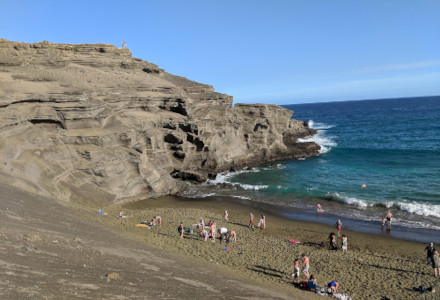
Photographer: Aren Elliott
CC License: https://bit.ly/3wnTHJF
Papakolea Beach Facts
- The marvel of geology that is Papakolea Beach is one that will leave other beaches really green with envy.
- Just look at the incredible olivine beauty. Papakolea Beach actually formed from green sand.
- It formed in the Ka’u District, on the island of Hawaii. It also represents one of only four known green beaches in the entire world.
- Getting to the incredible location can be tricky, though. The terrain near the region remains quite rugged, and a strong undertow develops during high tide.
Related Articles
Reynisfjara Beach Hot Water Beach Red Beach
Papakolea Beach Geological Origins
Would you believe that this great beauty formed from a volcano? It’s true. Papakolea Beach actually resides in what remains of the cinder cone of the extinct volcano named Pu’u Mahana.
It first formed more than 49,000 years ago, with the last eruption occurring around 10,000 years ago. Since the time of that last activity, the cinder cone has partially collapsed into the sea.
The unique green sand of Papakolea Beach remains much more abundant near the bottom of the cinder cone remnants. Also, in the Hawaiian language, Papakolea means plover flats.
Photographer: Steve Boland
CC License: https://bit.ly/3qUs1uO
Papakolea Beach Mineralogical Composition
With great power comes great responsibility. This holds true for the origins of Papokolea Beach: the great power of the ancient volcano was responsible for the unique beauty of the beach.
Located in the United States, this particular cinder cone is rather rich in the mineral olivine, a unique silicate compound. It contains both magnesium and iron.
It actually ranks among the first crystals to form as lava cools. The same mineral that gives Papakolea Beach its incredible color occurs much more commonly in Hawaiian volcanos than in most others.
Papakolea Beach Formation
In a sense, Papakolea Beach formed from the decay of its parent volcano. Over time, the motion of the waves eroded much of the cinder cone.
Additionally, the combination of carbon dioxide and water decomposes olivine. These dual actions released the mineral from the lava.
The olivine which forms Papakolea beach is also denser and heavier than the other individual components of lava.
As the ancient lava erodes, the other components are washed out to sea, while the crystals are washed ashore. Also, the constant erosion of the cinder cone continues to renew the beach.
However, the olivine will eventually be gone, and then the green color will disappear. What a shame.
Features Sharing Its Area
Ramona Falls Alamere Falls Thor’s Well
Check out our other articles on Whitehaven Beach, Moeraki Boulders, Purple Sand Beach, 7 Dazzling Desert Dwellers

